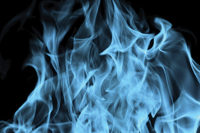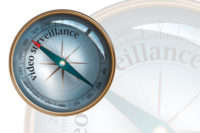On March 11, 2011, a 9.0 magnitude quake hit northeastern Japan, triggering a tsunami with 10-meter-high waves that reached all the way to the U.S. West Coast. Following the earthquake, Japan’s Kyodo News Agency reported major fires burning at more than 80 locations, while minor fires reached well over 300.
Events like the one in Japan continue to enhance the focus on fire safety as well as the value of mass notification, a growing area of the fire industry that shows strong promise in 2011.
“It is an unfortunate situation to see in Japan, but everyone also has a chance to learn from it and improve our industry,” says Hisham Harake, president, Hochiki America Corporation, Buena Park, Calif. “As we see more and more seismic requirements and updated business codes it makes sense, as the product and technology and codes should be continuously improving, especially since we are in the life safety business of protecting people’s lives and assets.”
Tom Aldridge, P.E., RCDD, CET, Fire Alarm Systems Level IV, president, Select Tel Systems Inc., Albany, Ga., describes the growing awareness and its impact.
“I think the one item definitely helping the fire market is the growing awareness. The need and importance of a fire alarm system has moved from almost an option in years past to something that is essential and expected. People in general realize the benefits from a fire alarm and do not necessarily think that a fire will never happen to them,” Aldridge says.
Brett Serxner, senior product manager, Fire, ADI, Melville, N.Y., says, “Tragic events that have taken place recently and over the past couple of years have led to an increased focus on fire and life safety across the market, and the NFPA 72®, National Fire Alarm Code® 2010 edition is positioned to improve emergency response measures. As this new legislation becomes adopted in jurisdictions across the country, it will create opportunity for dealers to generate more revenue and provide additional service to customers.”
Serxner points out that the guidelines of NFPA 72 (2010 Edition) have created a new era in signaling systems, and will help dealers grow their businesses by offering mass notification solutions, voice evacuation systems, intelligibility studies, risk analysis and more. “These technologies are customized to each environment or application and create the opportunity to build a multi-layer integrated system. As this regulation continues to gain more momentum, dealers will see opportunity for new installs and retrofitting older facilities,” Serxner says.
The natural connection between fire and mass notification continues to help drive the growth as well.
“Because the fire alarm system is designed to be a reliable, fully supervised system, even during adverse conditions, the use of fire alarm systems as a backbone for mass notification systems makes sense. In addition, many fire alarm systems now incorporate voice evacuation to direct building occupants in the event of a fire emergency. Such clear, spoken communication is also necessary during other emergency (mass notification) conditions. Both systems can share many components (such as speakers and amplifiers), reducing the overall cost to the end user,” Harake describes.
The “add-on” possibilities of mass notifications will open up opportunities for dealers to grow their business in 2011, says Serxner.
It is an opportunity that grew to exceed $1.2 billion in 2010 according to IMS Research, Austin, Texas. MNS sales in 2010 exceeded $1.2 billion. According to the study, MNS software adoption rates among Fortune 500 firms were an estimated 20 percent in 2010, and have been forecast to grow to 40 percent by the end of 2015. According to report author and analyst Michael Arluck, “The MNS software market is beginning to blossom and move beyond the military and higher education verticals where it has flourished in recent years. Two sectors with particularly healthy outlooks are commercial and healthcare.”
J. Matthew Ladd, president and chief operating officer, The Protection Bureau, Exton, Pa. is seeing the growth. “Mass notification is the fastest growing part of our company. We see this being an area where expertise is required and it allows us to set ourselves apart from competition,” Ladd says.
The opportunity isn’t just for the installers, according to James Rothstein, executive vice president, Tri-Ed / Northern Video Distribution, Woodbury, N.Y. “Fire, as a backbone for mass notification, is clearly an opportunity for equipment manufacturers. We believe those who focus on this opportunity can see very positive results across many verticals,” Rothstein says.
Manufacturers like System Sensor are seeing mass notification leading to a shift toward speakers away from horns.
“The ability to promote your system as meeting the new intelligibility requirements is a big opportunity for installers as the awareness of the requirements grows. Another dynamic change in the marketplace is that people want speakers. They allow direct messaging through a speaker system, so more businesses are shifting to speakers and moving away from a standard horn. The live messaging where someone can pick up a microphone and direct a specific message is key,” says Christa Poss, marketing manager, Audible Visible Business Unit, System Sensor, St. Charles, Ill.
How clearly those messages are heard — or intelligibility, a measurable aspect of electronic voice transmission systems defined in NFPA 72 that indicates the degree to which people will be able to understand voice messages transmitted — “is the single biggest change that we’ve seen,” Poss says.
That intelligibility issue and the experience necessary to meet the codes requirements may allow outside competition in the mass notification space.
Intelligibility is a struggle for many dealers and installers to do correctly, believes Ted Milburn, vice president of marketing and engineering, Cooper Industries. “A typical fire system will not meet the code without modification. For the first time, in order to develop systems for the 2010 code, it has to be an engineered system as opposed to a code-dictated placement of speakers. You have to design a system based around how to design an intelligible system and the industry as a whole is struggling over that.”
Manufacturers across the industry are responding with software, training, classes and more to help. If that doesn’t work, there’s competition willing to take the business.
“Fire systems installers don’t typically have the necessary background on audio intelligibility that is required for mass notification systems, so we’re seeing professional sound and communication integrators helping to drive the market, alongside fire system dealers,” describes Tom Mechler, product marketing manager, Bosch Security Systems Inc., Fairport, N.Y.
Manufacturers are also focusing on providing systems in the upcoming year that account for the continual change in communications technologies.
“We are continuing to see a big migration from the phone system over to alternative forms of communication like IP or cellular systems,” says Gene Pecora, marketing director for Fire-Lite Alarms, Northford, Conn.
Cellular remains on the rise as the decline of dial-up continues in 2011.
“We think that the death of dial-up communication is on the horizon. We’re preparing for that future in the fire market — and all the markets we serve — with new communication options. For fire communications, those options include stand-alone cellular communication. System installers are always eager to find new ways to reduce costs for their clients to create money-saving solutions. For fire panels, we provide the technology to replace traditional dial-up communication with cellular communication. Cellular communication lets end users save as much as 75 percent in monthly service fees. That’s significant,” emphasizes Mark Hillenburg, executive director of marketing, Digital Monitoring Products (DMP), Springfield, Mo.
Initial concerns with alternative communications technologies by authorities having jurisdiction (AHJs) seem to be continuing to fade, especially in certain areas.
“IP and fire has been and is an important part of the industry. We have been selling wireless fire systems and have found local AHJs very receptive to the idea,” Ladd says.
The main benefit of wireless systems is fewer installation costs and the possibility to enable some services to be done remotely and problems to be found sooner.
As Mechler describes it, “IP provides an instant means for dealers to access important system functions, including programming, status, history files, diagnostic tools and test data. End users can also use this connection to perform drills and check system status.”
Dealers are using that functionality to become more efficient, Milburn says
“Going from a service company that deploys service technicians on quarterly or annual inspections to a company that asks, ‘How can I be better at service and how can I get diagnostic information from the control panel before I deploy a system so I have the right things on the truck and I know the right level of technician that needs to go out there and do the service work?’ is enabled through choosing a product that is designed from the ground up with those capabilities and reporting functionality — and those choices and that product offering is a trend in not only the fire space but also other spaces like access control and mass notification,” Milburn says.
Multiple Growth Areas
Multi-criteria fire detectors are also on the rise, and video remains a leader.
“Video detection of fire alarm has been developed and we are seeing more and more opportunities in this area, especially with customers who have the need for monitoring of fire in outdoor areas,” Ladd describes.
Carbon monoxide (CO) detection also remains a strong opportunity in 2011.
“Another fast-growing category is system-connected CO detectors, which are very similar to system-connected smoke detectors. Unlike the Lowes or Home Depot versions that people often get that only notify through sound, a system-connected detector is connected to a panel back to a central station. It has been a growth market the last three or four years,” Poss explains.
With multiple areas poised for growth, the industry has a “cautiously optimistic” outlook for the coming year.
Terry Yow of San Francisco Fire Protection Inc., San Francisco, also sees the growth in the San Francisco Bay area — but it varies by company size.
“I believe that this will be a fair year for larger alarm companies in terms of the size of the projects going up in our area. What they have to contend with is the competition among themselves. There is only so much new construction going on. But there’s more underneath the new construction. I really feel that the job size left for us is more lucrative in the long run than the one big job. Remember that it’s all about the reccurring revenue. We can afford to build up our company one job at a time.
“Our approach to 2011 is simple: Provide a fair market price in both installation and monitoring, along with proper tests and inspections. We will not get into a situation where we would drive the costs down for monitoring and maintenance just to get a job. This only hurts the industry. We have to maintain a high level of excellence and professionalism, and not cheapen our services. We will not get into the $99 installs like what happened in the security market,” Yow says.
“The fire alarm industry is slowly recovering; we are seeing more opportunities. However, with the construction market down, so goes the fire industry,” Ladd says.
One indicator of the construction market is the Architecture Billings Index.
“2011 is off to a good start for us. Indicators like the Architectural Index have turned from neutral to positive, which is a good thing,” Pecora describes.
Because design work precedes construction, the Architecture Index is a predictor of future construction activity. The most recent Architecture Billings Index report shows rising inquiries (for proposed projects) and work on hand (billings) at architectural firms. The lag between architectural billings and construction activity is reflected in the AIA Consensus Construction Forecast. It predicts a 2 percent construction spending decline in 2011, followed by a 5 percent gain in 2012.
Even with the delayed full-blown growth, fire continues to be an opportunity for security companies looking to grow their business.
“The guys who made it this far have proven they can keep their pulse on the industry and react as necessary — and what we’re finding is that although people may have been simply focused on trying to keep their business together, now that they do have breathing room, they are thinking about how to grow their business and fire is an excellent opportunity to do that.
“Reports out there show the fire alarm industry is supposed to grow in the low single digits in 2011. That is a reasonable number, but as good business people we are not going to let economic indicators dictate our business,” Pecora says.
That makes success in 2011 all about the attitude and not about the reports.








